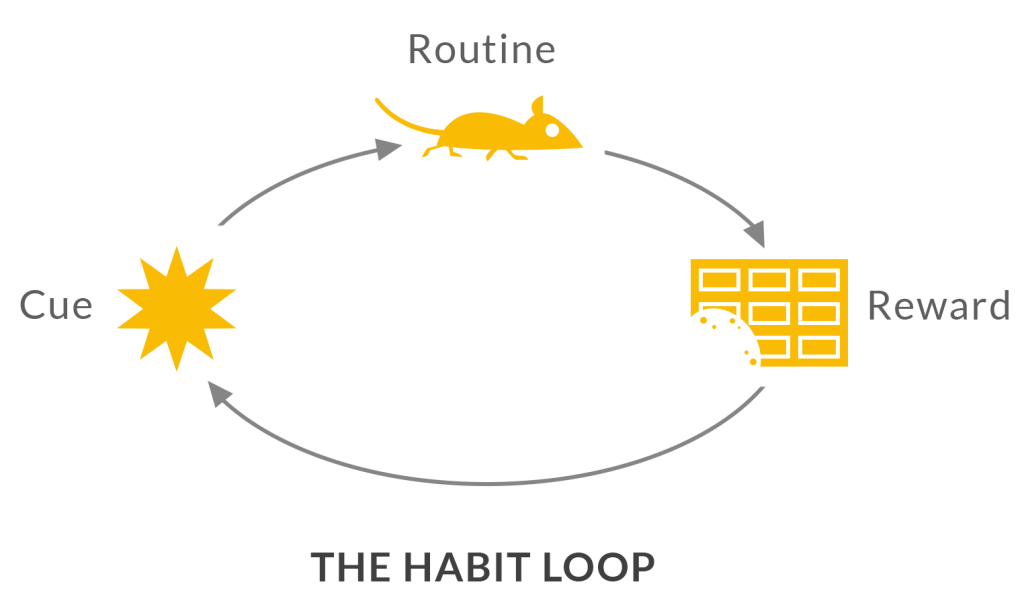
The Habit Loop
Charles Duhigg’s book The Power of Habit introduced a concept called The Habit Loop.
He breaks this into three steps:
- Cue: the trigger for an automatic behavior to start
- Routine: the behavior itself
- Reward: what our brain gets out of it
“When cue and a behavior and a reward become neurologically intertwined, what’s actually happening is a neural pathway is developing that links those three things together in our head.”
He posits this is why habits are so sticky, and why habits (good and bad) are hard to break.
Compare this to the Game Design Thinking Loop, which has four parts:
- Assess
- Decide
- Act
- Reward
The GDT Loop includes the concept of agency, since the person is deciding what to do. Whereas The Habit Loop removes the agency and deals with it strictly as a habit. The author posits that changing a habit is best done by modifying habits that are already present, instead of trying to eliminate them. Such as the age old example of “grab a lollipop instead of a cigarette”.
But both loops have a neurochemical reward (between steps 2 and 3 for The Habit Loop and steps 3 and 4 for the GDT Loop) and the GDT Loop assumes a cue between steps 4 and 1, while The Habit Loop makes this clear as the first step.
As we find more examples of similar frameworks existing in the literature, we will take the time to compare and contrast them to see how they add to the conversation.
Ссылка на blacksprut com – зеркало на блекспрут маркетплейс

